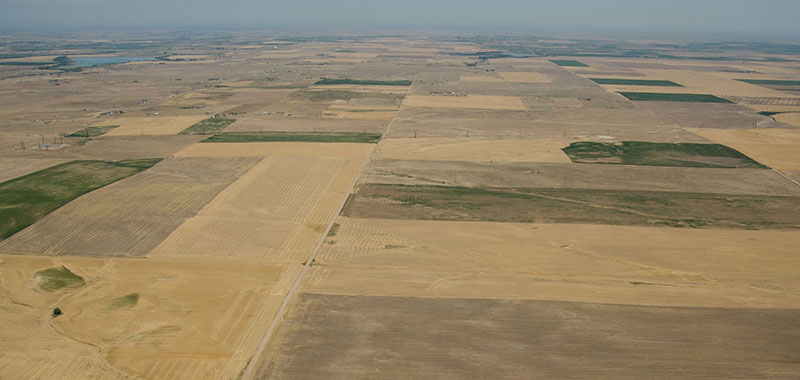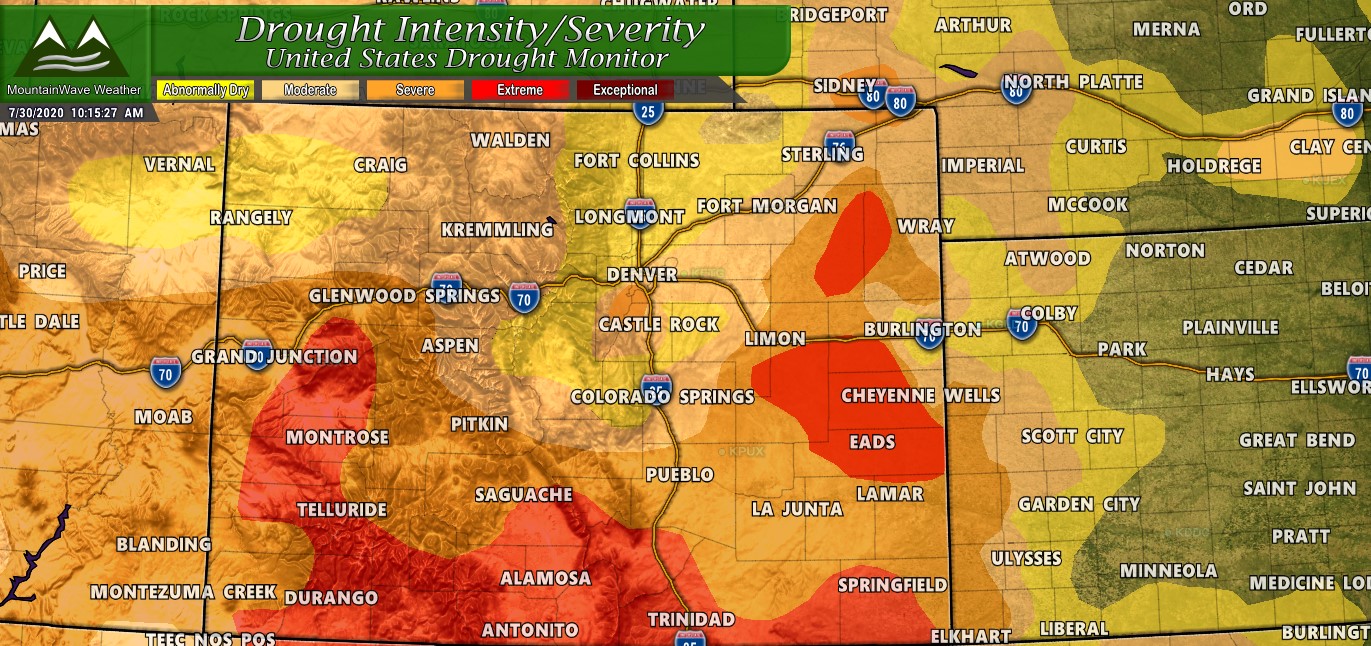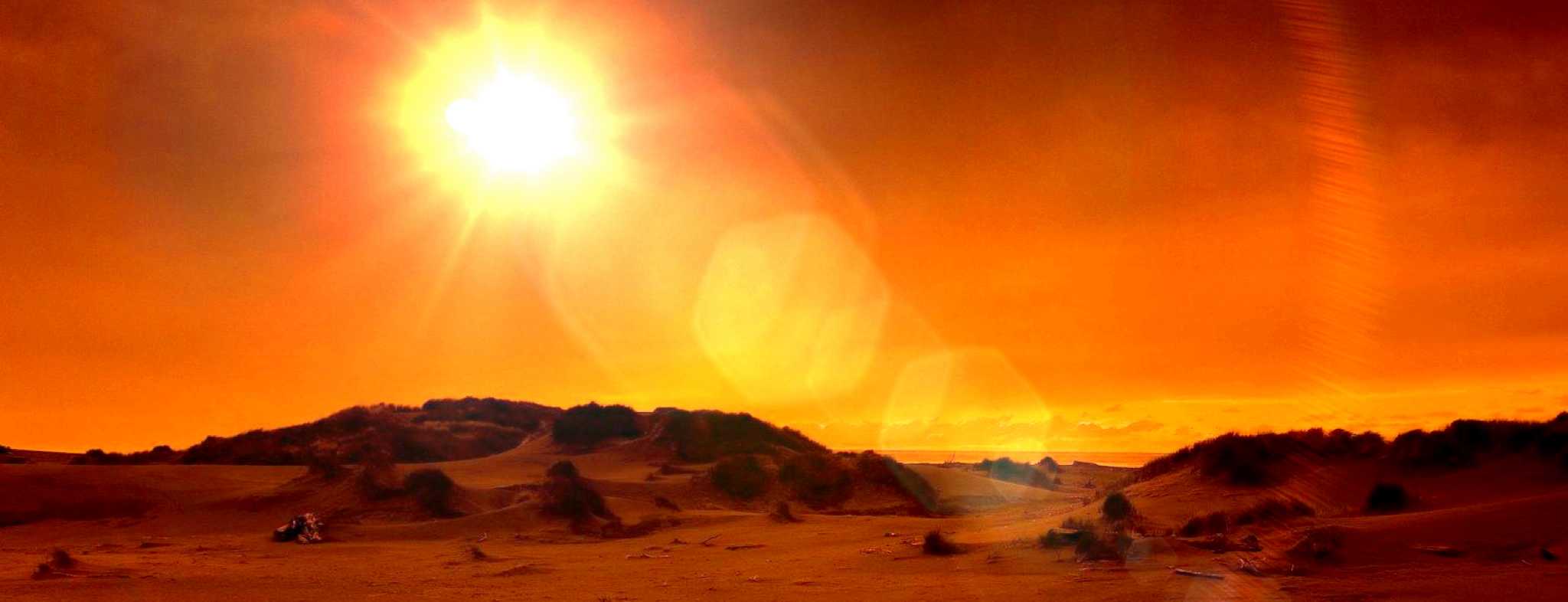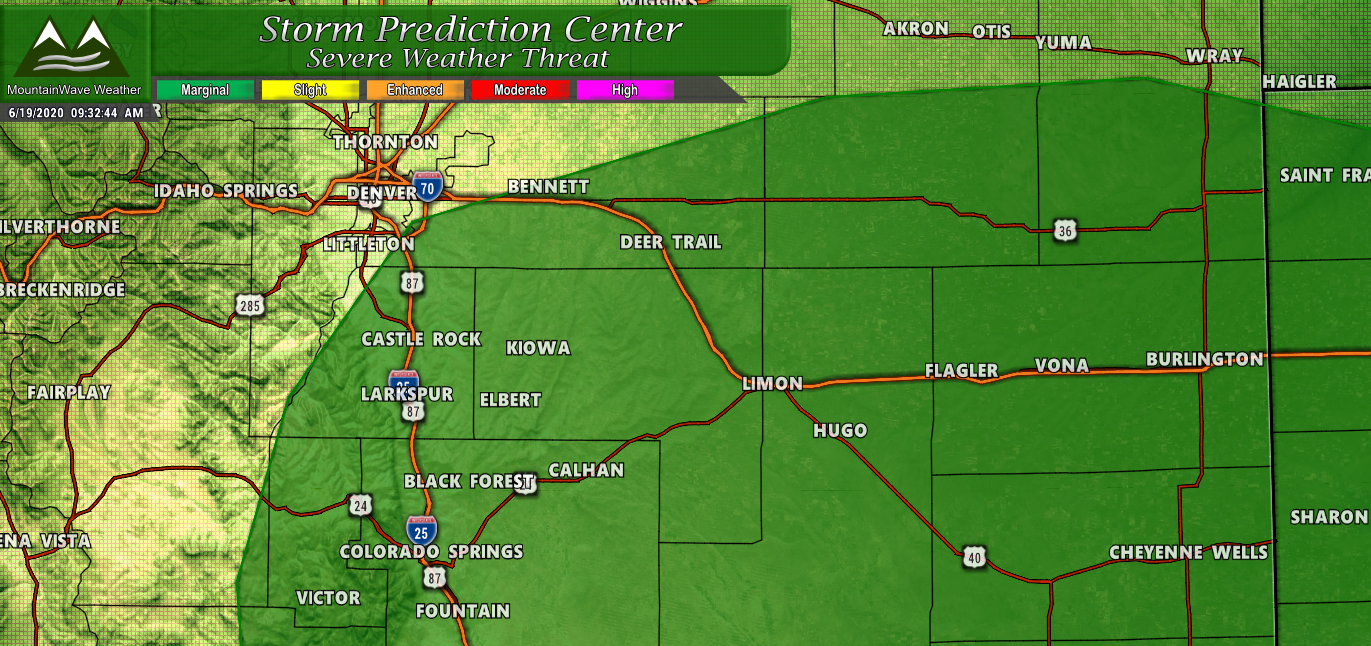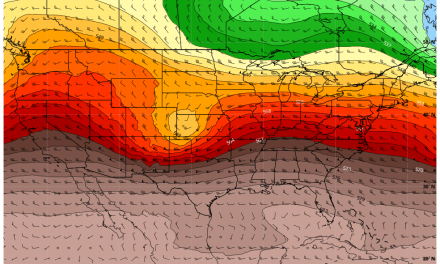Despite the beneficial rain we’ve seen over the past few days due to a weak monsoon setup (and many can attest that not everyone saw a decent amount of rain) drought conditions continue to worsen across Colorado. We are getting to a point in the summer where the lack of a strong, established monsoon will begin to become pretty detrimental to our environment going forward. July and August are two months of the year where we typically see healthy amounts of rain that tide us over through what is usually a dry fall season for us.
When we look at a lot of the models and outlooks we don’t see any indication of a prolonged, drought busting monsoon sadly.
Palmer Divide Region – Drought
The effect of drought are hard for some to grasp, I know when I drive around different parts of the Palmer Divide I can already see the stress on the vegetation due to the heat and lack of moisture. There are also a lot of agriculture operations that are effected by drought and considering that makes up a large part of Elbert and El Paso counties it is something to keep an eye on.
Here’s a description of what each of the levels of drought means in terms of impacts and a rough idea of which areas are seeing those impacts.
| D0 – Abnormally Dry – Southern and Eastern Douglas County – Western Elbert County |
Hay production decreases; rangeland is dry |
| Irrigation begins sooner | |
| D1 – Moderate Drought – Central and Northern Douglas County – Central Elbert County – Central and Northern El Paso County |
Rangeland growth is stunted; very little hay is available |
| Dryland crops suffer | |
| Wildfires increase | |
| Pheasant population declines; ski season is limited | |
| D2 – Severe Drought – Northwestern Douglas County – Eastern Elbert County – Eastern El Paso County |
CRP lands suffer |
| Farmers reduce planting; producers sell cattle | |
| Fire season is extended | |
| Snowpack is low; surface water levels are low; river flow is reduced |
State of Colorado – Drought
The state as a whole is not faring much better, a staggering 99% of the state is in “Abnormally Dry” conditions or worse. This week we saw a lot of mountain areas and Northeastern areas of the state added to drought or had worsening drought conditions. Severe and extreme drought covers much of Southern Colorado with the worst of it being in the valleys and mountain regions of Southwest and South Central Colorado.
Here are the effects of extreme drought in Colorado:
| D3 – Extreme Drought | Pasture conditions worsen |
| City landscapes are dying | |
| Large fires develop | |
| Rafting, fishing, hunting, skiing are reduced; fish kills occur | |
| Grasshopper and insect infestation are noted | |
| Reservoirs are extremely low; mandatory water restrictions are implemented; water temperature increases |

On a recent trip to Gunnison, Colorado I drove through many severe and extreme drought areas in Southern Colorado. Can you see the stress of the vegetation, especially the grasses?
Summary
While our reservoirs are doing quite well this year due to an average snowpack season (and a few above average ones before that) it is looking likely that drought conditions will be us for some time. I don’t forsee any short term issues with the reservoir/water supply this year, but if we continue drought into the fall/winter/spring seasons and if mountain snowpack is diminished we may be singing a different tune next year around this time.
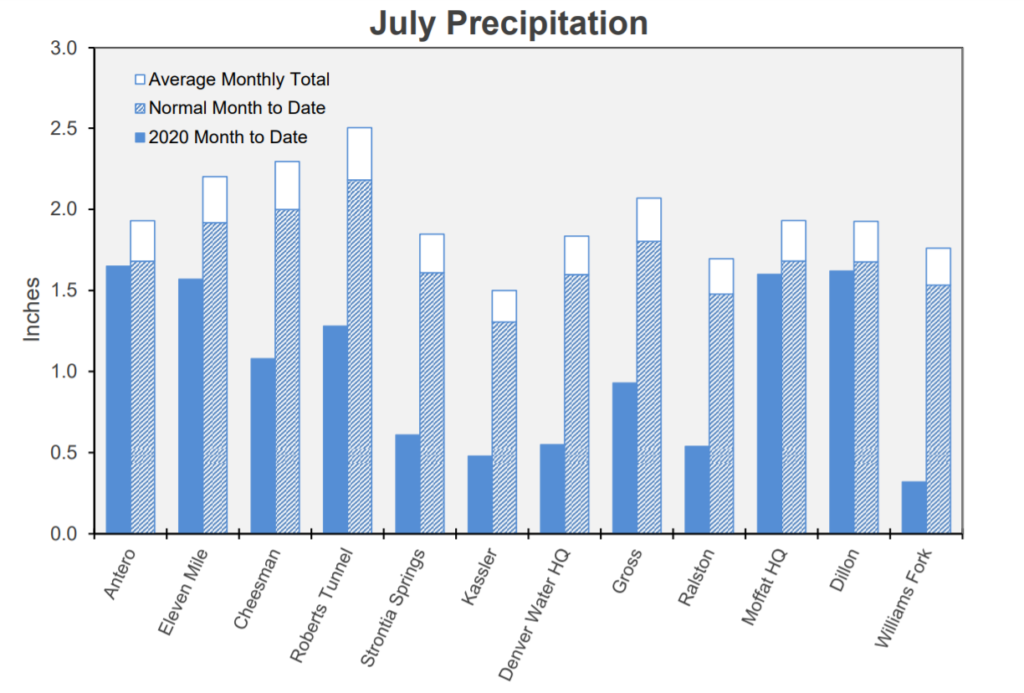
Every major water draw area for Denver Water is reporting below average precipitation and above average usage for July 2020.
For now, we will just have to keep an eye on things but it’s always good to be prepared!

